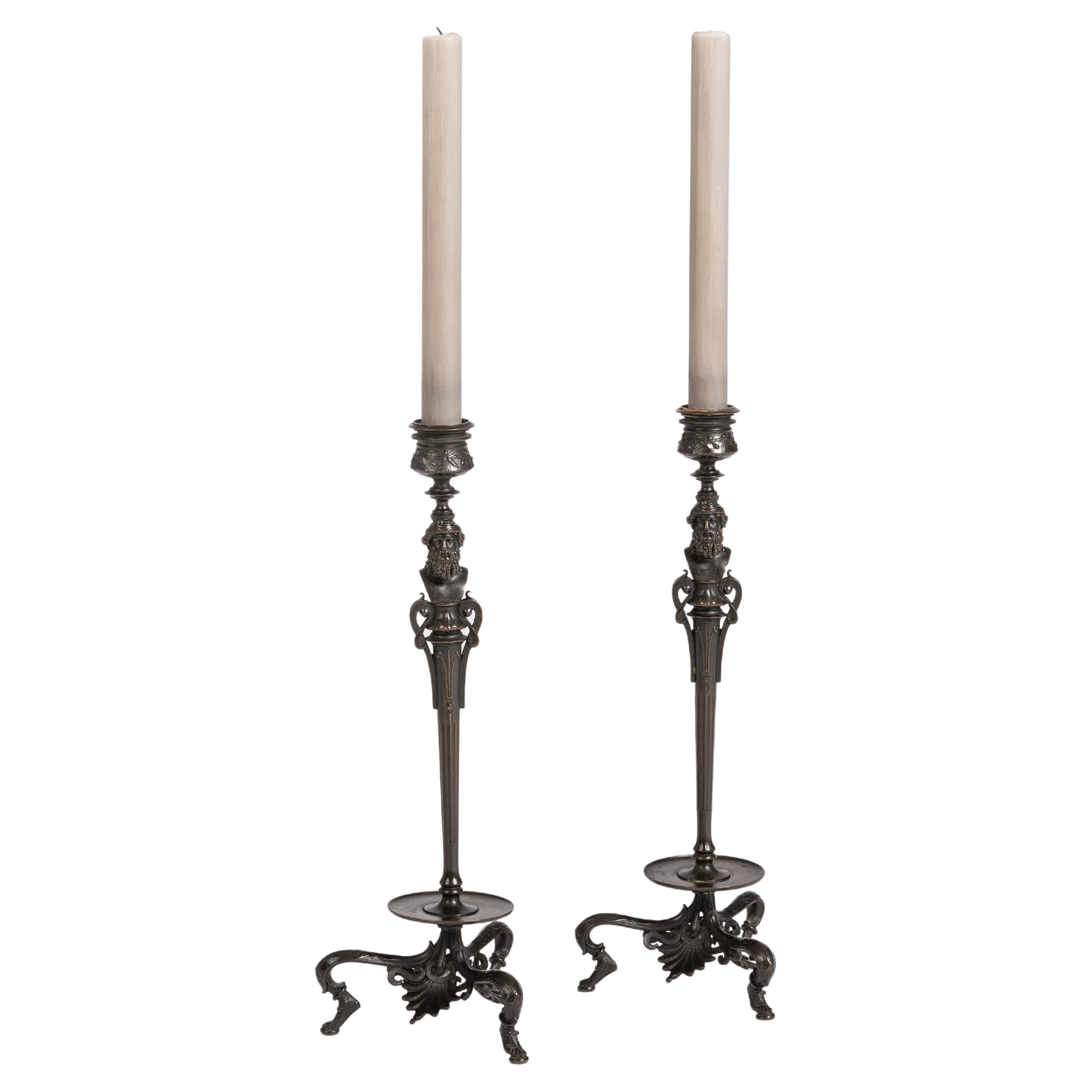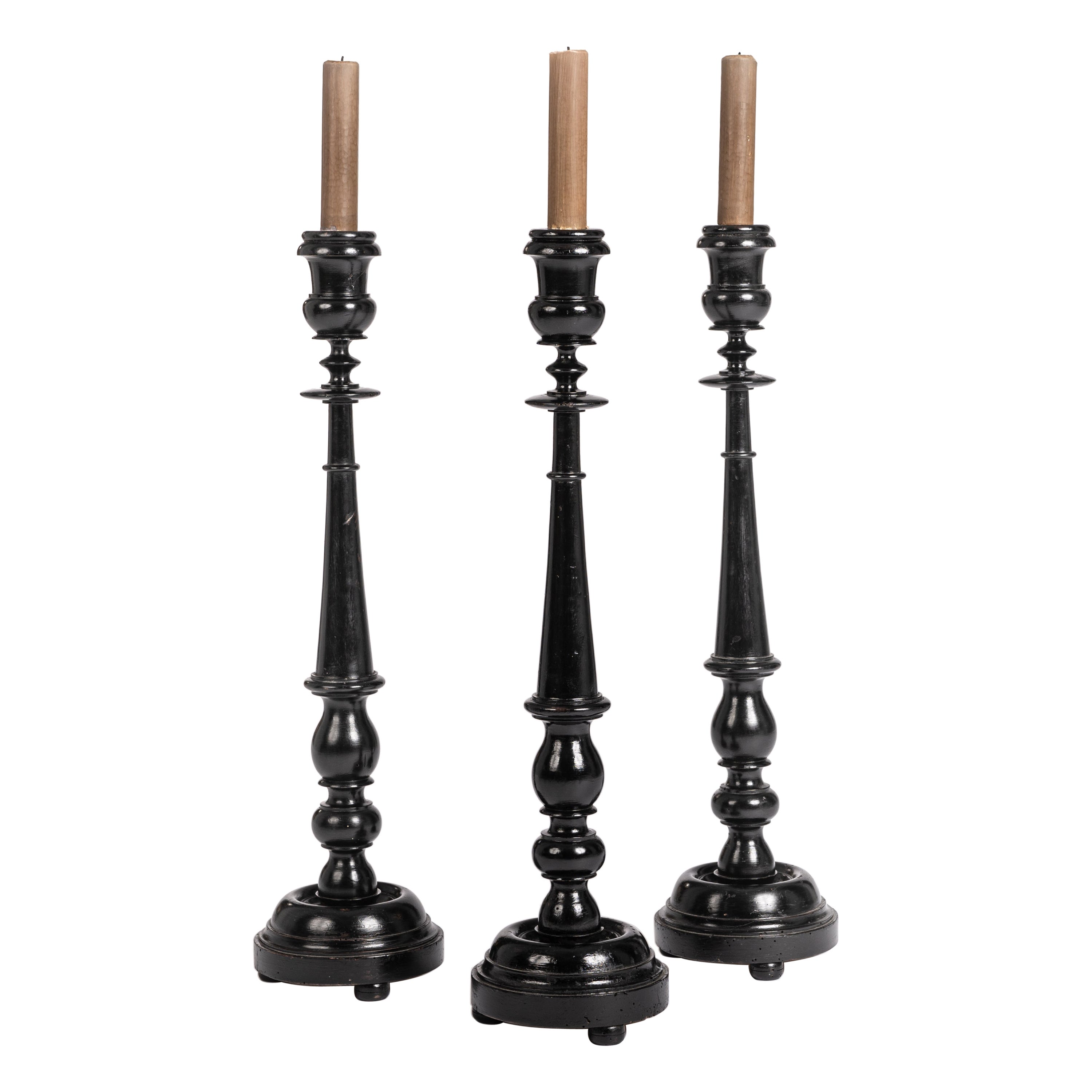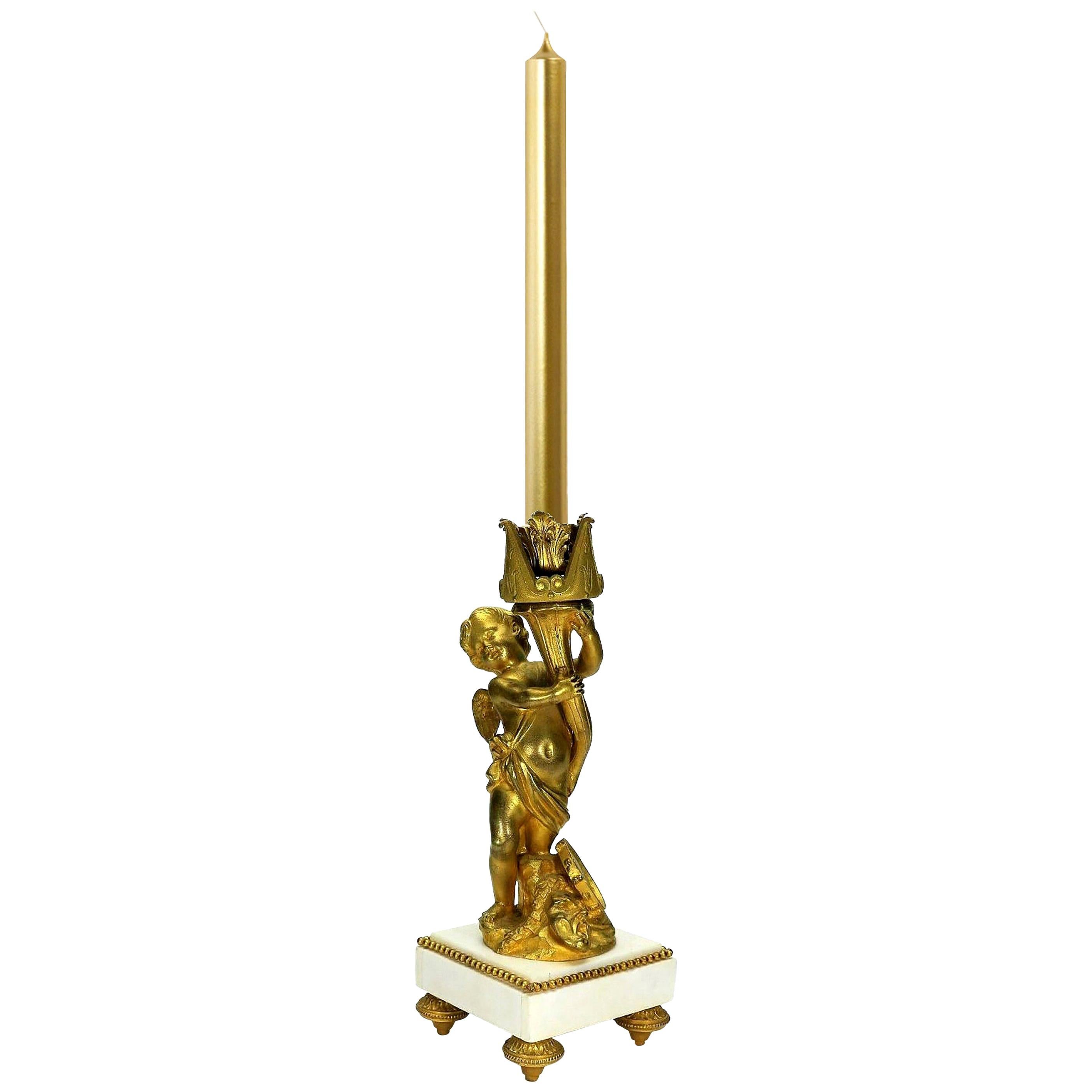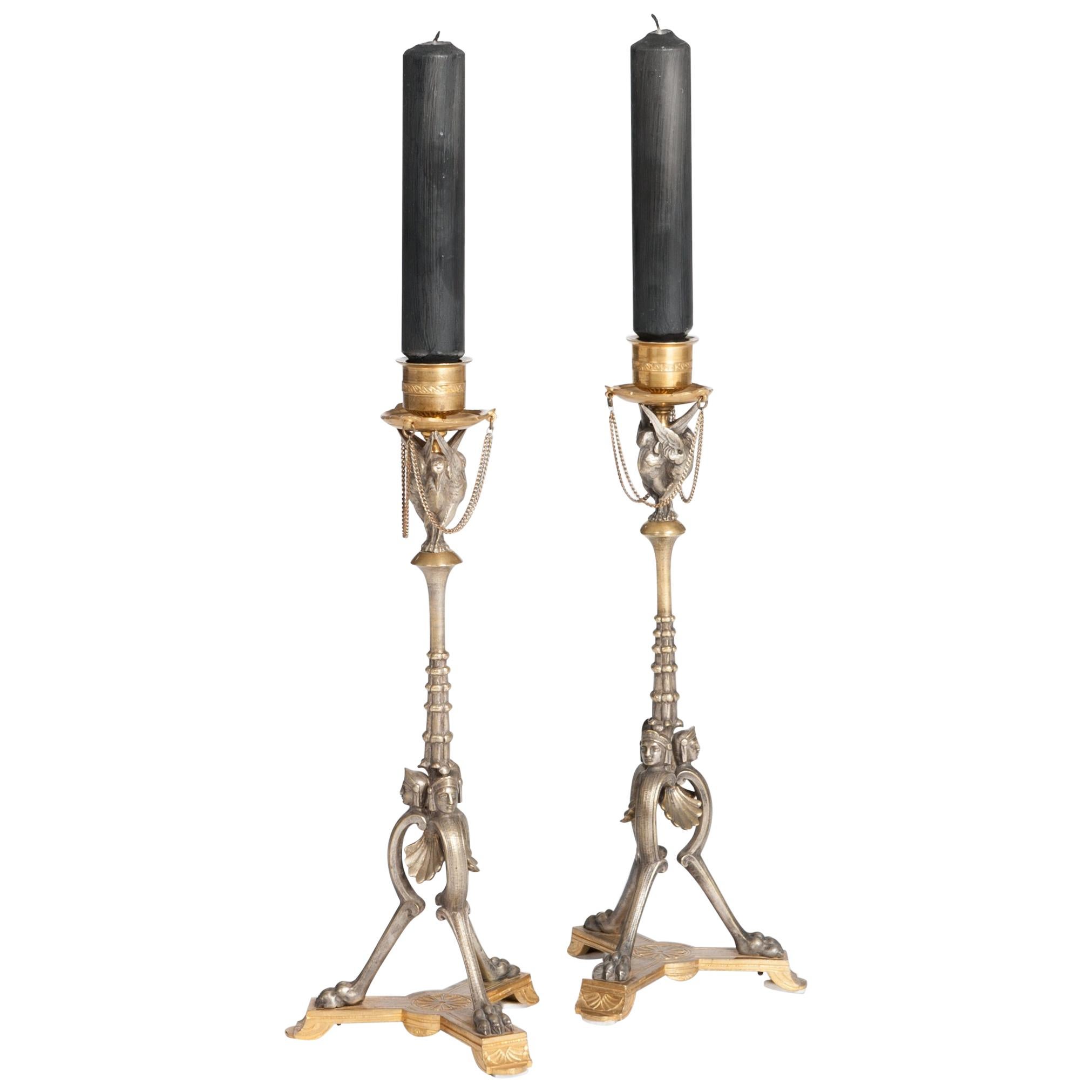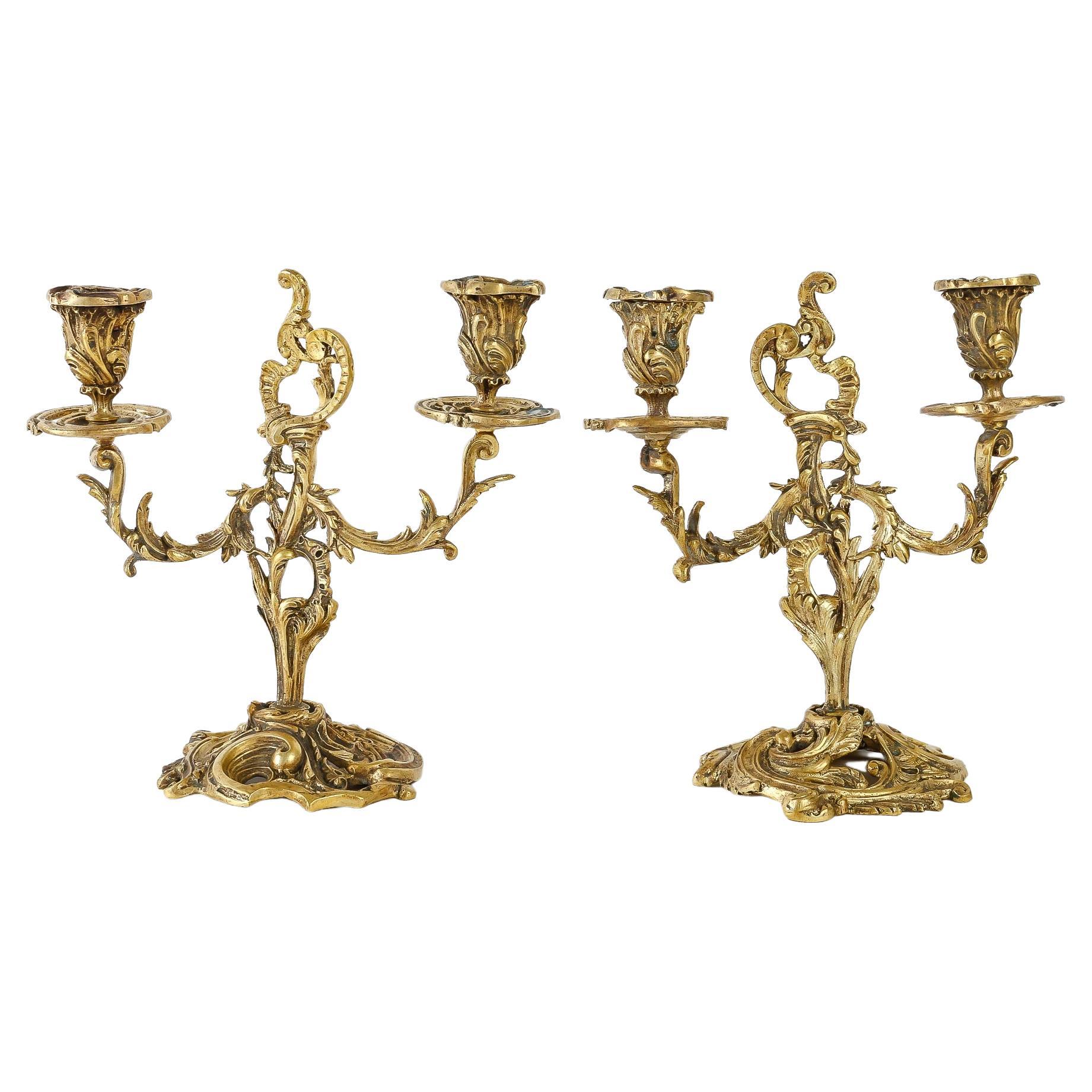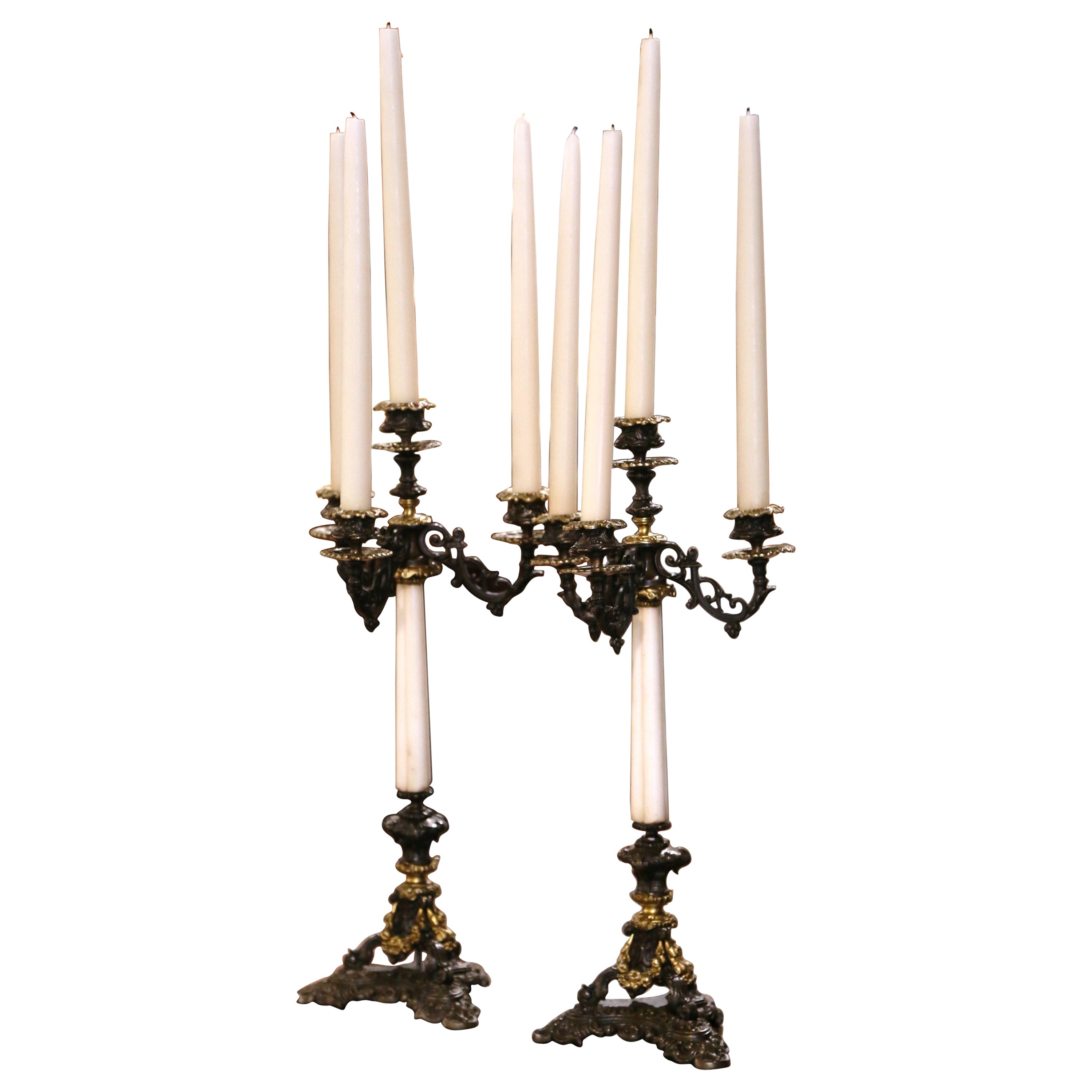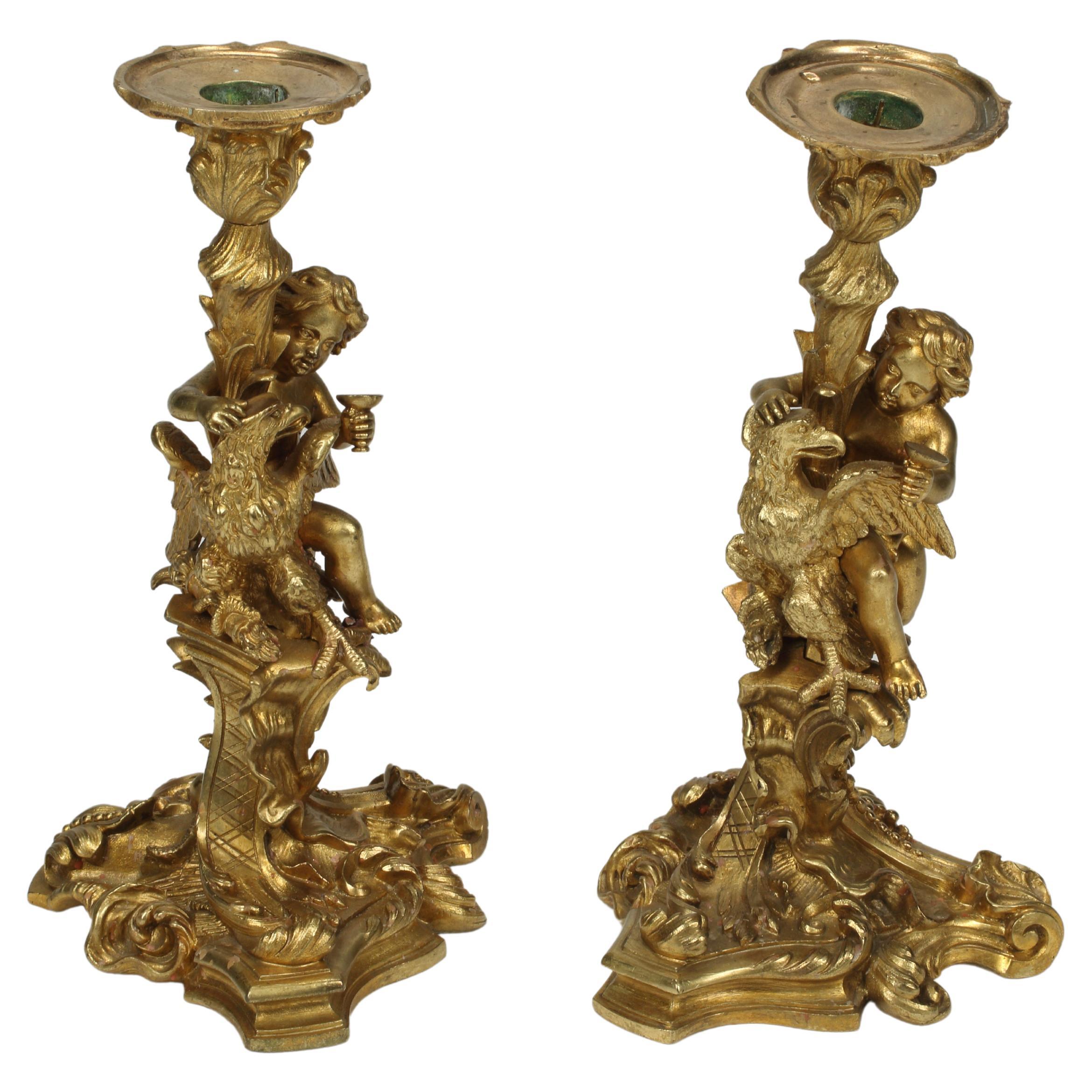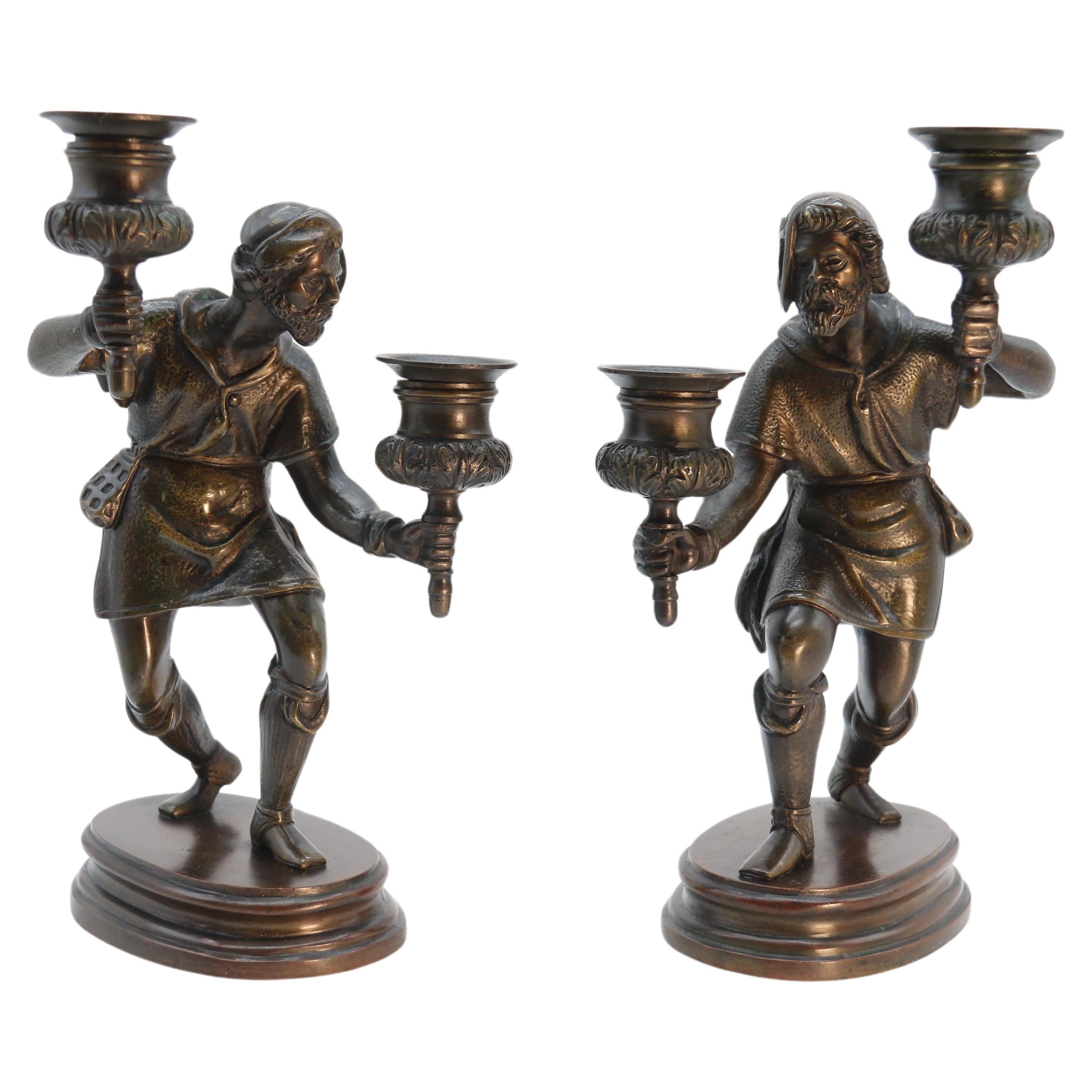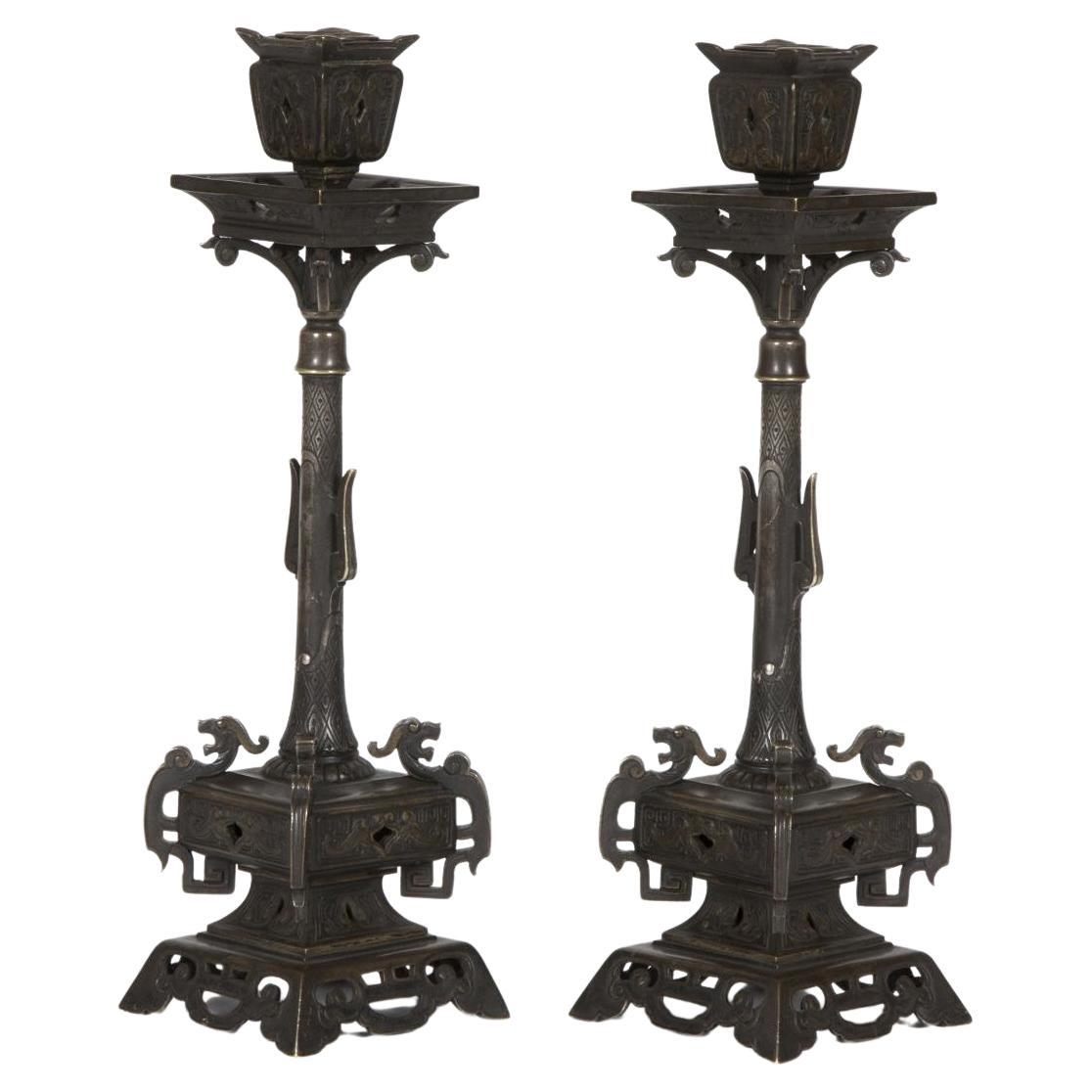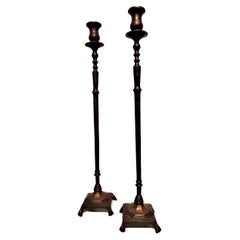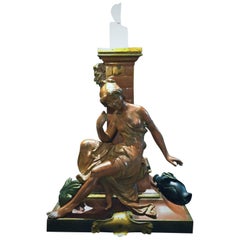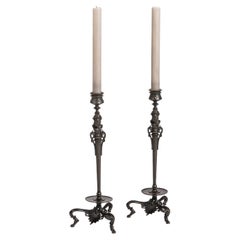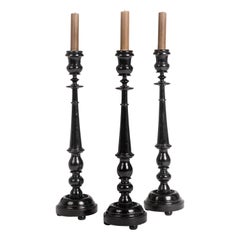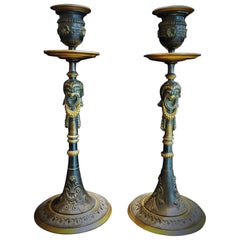
A Pair of Napoleon III French Bronze Candlesticks, circa 1860s
View Similar Items
Want more images or videos?
Request additional images or videos from the seller
1 of 5
A Pair of Napoleon III French Bronze Candlesticks, circa 1860s
About the Item
- Dimensions:Height: 11.75 in (29.85 cm)Diameter: 3.88 in (9.86 cm)
- Sold As:Set of 2
- Style:Napoleon III (Of the Period)
- Materials and Techniques:Bronze,Patinated
- Place of Origin:
- Period:
- Date of Manufacture:1860
- Condition:Wear consistent with age and use. We make our best effort to provide a fair and descriptive condition report. Please examine the photos attentively, as they are an integral part of the item description.
- Seller Location:New York, NY
- Reference Number:1stDibs: LU2819310067271
About the Seller
5.0
Vetted Seller
These experienced sellers undergo a comprehensive evaluation by our team of in-house experts.
Established in 1993
1stDibs seller since 2017
68 sales on 1stDibs
Typical response time: 2 hours
More From This SellerView All
- Aesthetic Movement Pair of Bronze Candlesticks in Manner of Tiffany, ca. 1880sLocated in New York, NYAmerican Aesthetic Movement Pair of Bronze Candlesticks in Manner of Tiffany ca. 1880s DIMENSIONS Height: 18.25 inches Width: 3.25 inches Depth: 3.25 inches ABOUT This elegant pa...Category
Antique 1880s American Aesthetic Movement Candlesticks
MaterialsBronze
- La Cruche Casee, Antique French Bronze Sculptural Desk Candleholder, circa 1875Located in New York, NYThe inscription engraved on the gilded medallion in the center of the plinth serves as the name of this remarkable sculpture, La Cruche Casee (The Broken Jug). Made of multicolored patinated and ormolu bronze in the second half of the 19th century France, this absolutely fabulous stationary figural candle...Category
Antique 1870s French Romantic More Candle Holders
MaterialsBronze
- Pair of Mid-Century Modernist Anodized Brass Lotus Candlesticks, USA, 1950sLocated in New York, NYA duo of anodized brass candlesticks, each featuring a round base, stem and a lotus flower that contains a regular size candle. Manufactured in the USA during the 1960s. The cand...Category
Mid-20th Century American Mid-Century Modern Candlesticks
MaterialsBrass
- Napoleon III Marble and Bronze Garniture, France, 19th CenturyLocated in New York, NYA garniture is a decoration for the top of a fireplace mantel. Presented here is a good example of richly patinated and gilded bronze and red marble in the style of Napoleon III, who...Category
Antique 1860s French Napoleon III Urns
MaterialsMarble, Bronze
- WMF, German Jugenstil, a Pair of Copper & Brass Candlesticks, Ca. 1910By WMF IkoraLocated in New York, NYDETAILS Marked on bottom. WMF GmbH In 1853, mill owner Daniel Straub, together with the Schweizer brothers, Louis and Friedrich, established the Straub & Schweizer metal works in Geislingen an der Steige, Germany. Only a few years later in 1862, their silver-plated tableware and serving dishes were awarded a medal of distinction at the world exhibition in London. The company, originally called Metallwarenfabrik Straub & Schweizer, merged in 1880 with Ritter & Co - a producer of high end luxury items who were ahead of their time in silver plating technique. Instead of using the method of heat and mechanical pressure to plate their wares, Ritter dipped the item into a bath of silver which together with an electric current produced pieces that were finely and evenly covered in a layer of silver. This method of plating was called ‘Galvanisation’ and allowed more intricate and complex pieces to be plated. After several years both companies still faced financial problems and in 1880 they joined with the Wurttemberg Union Bank and the company was renamed “WMF” (Württembergische Metallwarenfabrik). From its founding as one company, WMF's growth was tremendous - acquiring more factories along the way, notably including "Orivit AG" and "Orion KM". By the end of the 1900's, they were the world's largest producer and exporter of household metalware. WMF started making glass in 1883 when a glass house was built at Geisslingen near Stuttgart to produce their own glass inserts. The original 1883 glass house was destroyed during the First World War and a new, more modern facility opened in 1922. The young glass designer Karl Wiedmann perfected the technique of iridized surfaces and the resulting "MYRA"- Kristall entered production in 1926. The same year also saw the beginning of the first "IKORA" glass - reputedly discovered by accident whilst correcting a Myra glass...Category
Vintage 1910s German Jugendstil Candlesticks
MaterialsBrass, Copper
- Pair of Japanese Patinated Bronze Candelabras, Meiji Period, ca. 1900Located in New York, NYThis most unusual pair of original 18th century Japanese patinated bronze candelabras, uniquely designed as branches of mountain flowers entangled by a dragon, are mounted on the con...Category
Antique Late 19th Century Japanese Japonisme Candelabras
MaterialsBronze
You May Also Like
- Pair of French Napoleon III Bronze Candlesticks by Foundry F. Barbedienne 1860sBy F. Barbedienne FoundryLocated in Salzburg, ATPair of very elegant classicist candlesticks in fine patinated bronze, signed BARBEDIENNE. The execution of the casting is extremely finely worked with delicate leaves on the outer wall of the candlestick, with a head of antiquity on the upper part of the stem which flows into the lower part with fluting and side volutes. The 3 curved legs stand on raised feet with delicate strappy sandals. Measures: The diameter at the top is 3.5cm and at the bottom 13.5cm Ferdinand Barbedienne (* August 6, 1810 in Saint-Martin-de-Fresnay, Calvados department, France; † March 21, 1892 in Paris) was a French sculptor, bronze ware manufacturer, and gallery owner. One of the most important and popular Éditeurs d'art, or publishers of art articles, he had most of the French sculptors of his time under contract. Life and work Ferdinand Barbedienne was the son of a farmer. At the age of 13, he learned the Craft of saddlery. In 1822 he moved to Paris, where he first worked as a clerk in a wallpaper shop. He received start-up capital from his employer to open his own store, which he set up on Rue Notre-Dame-de-Lorette in 1834. He pursued the idea of exhibiting bronze statues in addition to his core business and mass producing them in small format. In 1838, he joined forces with the mechanic Achille Collas, who had developed the machine á reduction (réducteur for short); a device based on the principles of the pantograph that could reproduce three-dimensional objects in any size - reduced or enlarged. On November 29, 1838, both signed the founding contract for the company Société Ferdinand Barbedienne et Achille Collas, which aimed to commercially exploit the mechanized production of sculptural works for an initial 20 years. Barbedienne took care of the commercial management of the company, while Collas contributed the patent on his invention and seven existing machines, and with his profound knowledge of machinery was responsible for the production processes. Together they decided on the subject matter of the objects, the selling prices, and all other financial matters. In 1841, they produced casts of the Apollo of Belvedere, the Spinario, and 21 pieces with the motif of a bas-relief of the Parthenon. These were followed by versions of the Laocoon group, the Venus of Arles, and the Borghese Fencer, among others. Special interest was initially shown in works from antiquity, for which casts from the Atelier de Moulage in the Louvre served as models. The company continued to produce works by representatives of the Renaissance such as Michelangelo, Donatello, Giovanni Bologna or by French sculptors such as Jean Goujon, Jean-François Flamand, Pierre Puget, François Girardon, Antoine Coysevox...Category
Antique 1860s French Napoleon III Candlesticks
MaterialsBronze
- Pair of Tall French Napoléon III 1860s Candlesticks with Carved Gilt MotifsLocated in Atlanta, GAA pair of tall French Napoléon III period candlesticks from the mid-19th century, with fluted accents and carved gilt motifs. Created in France during the reign of Emperor Napoléon III, this pair of candlesticks attracts our attention with its great proportions and complimenting colors. Each features a fluted body highlighted with gilt accents and rests on a circular base adorned with flaming torches and laurel...Category
Antique Mid-19th Century French Napoleon III Candlesticks
MaterialsWood
- Set of 3 High Black Ebonized Carved French Napoleon III Candlesticks 1860sLocated in Salzburg, ATSet of 3 large black ebonized French Napoleon III candlesticks. The turned candlesticks have an elegant siluette the slightly higher base of 15cm diameter and 7cm height on 3 small round baroque feet forms the base. The conical, slender central base is inlaid at the bottom with a triple turned baluster stem and at the top with a turned plate as a subdivision and on a small baluster above it the slender and elongated candlestick stem. The set of 3 candlesticks...Category
Antique Mid-19th Century French Napoleon III Candlesticks
MaterialsWood
- Napoleon III Candlestick Angel White Marble, and Fire-Gilt Bronze, 1860sLocated in Rijssen, NLNapoleon III candlestick angel white marble 19155, candlestick from France, circa 1860, an angel carries the candleholder and stands between a discarded mask and a tambourine. The...Category
Antique 1770s French Napoleon III Candlesticks
MaterialsBronze
- Pair of French Napoleon III Candlesticks Bronze & Bronze Firegilt by A. DaubréeBy Alfred DaubréeLocated in Salzburg, ATPair of French Napoleon III candlesticks in bronze and bronze fire gilt designed, manufactured and signed by Alfred Daubrée, Nancy. The cast bronze body...Category
Antique 1860s French Napoleon III Candlesticks
MaterialsBronze
- Pair of 19th Century Bronze Candlesticks, Napoleon III PeriodLocated in Saint-Ouen, FR"Pair of 19th century bronze candlesticks, Napoleon III period" Pair of small bronze candelabra, 19th century, Napoleon III period. h: 21cm, w: 22cm, d: 12cmCategory
Antique 19th Century French Napoleon III Candlesticks
MaterialsBronze
Recently Viewed
View AllMore Ways To Browse
Candlestick Glass Storm
Tiffany Cobra
19th Century Crystal Candlestick
English Silver Plate Candlesticks
Brass Candlesticks America
Brass And Cast Iron Candlesticks
Atelier De Veer
Venetian Carved Candlesticks
Old Candlesticks
Bohemian Candlesticks
Gab Candle Sticks
Seahorse Candle Holder
Ormolu Candlesticks 1800s Pair
Vintage Wooden Candle Molds
Wedgewood Candlesticks
3 Foot Brass Candlesticks
Archimede Seguso Dolphin
Candle Holders Prisms Enameled Glass
